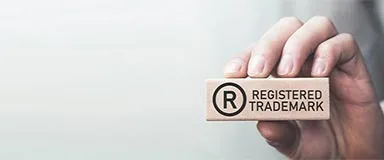Discover the risks and dangers of failing to register a trademark to understand the value and importance of trademark registration for your brand.

Your cart is empty
*Online Support: Mon-Fri, 9am-5pm (GMT-4). For assistance anytime, send us a message
Protect Your Brand in Canada Through a Simple Process Backed by Certified Local Attorneys
Before filing your trademark in Canada, you must evaluate any issues that may arise during the registration process. Our Comprehensive Trademark Study not only lists similar trademarks (graphic and phonetic) that may conflict with yours but also provides you with an Attorney's opinion on the trademark registration possibilities and the class(es) that your goods/services belong to.
Specialized attorneys will file your trademark application in Canada and carry out all the necessary formalities to bring your application for approval and registration. As soon as your trademark is filed, we will send you a filing report that will include the application number and application date. Also, we will send you a scanned copy of the filed application.
Discover how our services help protect and strengthen your brand in Canada.
Check if your trademark is available for registration with our easy-to-use search tool.
Search TrademarkRenew your trademark to maintain uninterrupted protection for your brand.
Renew TrademarkSafeguard your local domain with ease through our trusted partner, Register.Domains.
Search .CA Domains
Discover the risks and dangers of failing to register a trademark to understand the value and importance of trademark registration for your brand.

Discover how national and international trademark registration compare, the pros and cons of each, and which is right for you.

Learn answers to some of the most commonly asked questions on trademark registrations to improve your trademark knowledge.
Does Canada offer an Extensive Trademark Study, and what does it include?
If I previously filed my trademark in another country, can I claim priority in Canada?
Can my trademark be filed immediately and the Power of Attorney (POA) submitted later?
How long does it take for a trademark to be registered in Canada?
Do I need to provide a Power of Attorney?
Can someone who isn't a Canadian citizen or resident apply for a trademark in Canada?
Yes, you are allowed to apply for a trademark registration in Canada even if you are not a Canadian citizen or resident.
How long does it take to receive a trademark registration certificate in Canada?
In Canada, once your trademark is approved for registration, it typically takes about 2 to 3 months to receive the registration certificate.
Is it required to use my trademark in Canada to get it registered?
No, you don't need to use your trademark to register it in Canada. But after registration, you must use it within three years to prevent possible cancellation for non-use. If you fail to use your trademark in this period, someone else might challenge your registration due to non-use, risking its cancellation.
Could you provide me with an example of a study in Canada?
Sure, we can do that. Just send an email to [email protected], and we'll happily send you a sample to look at.
What are the steps involved in registering a trademark in Canada?
The process of registering a trademark in Canada includes several key steps, all covered by our "Trademark Application Filing" service:
How long does it typically take to register a trademark in Canada?
In Canada, registering a trademark typically takes about 18 months. However, this timeframe can change based on how complex the application is and if there are any objections or challenges.
What kinds of trademarks are eligible for registration in Canada?
In Canada, you can register trademarks such as words, logos, names, 3D shapes, sounds, slogans, motions, holograms, and trade dress. Colors can also be registered, but only when they are applied to specific shapes.
Can a registration be canceled in Canada?
Yes, you can cancel a registration for the following reasons:
What rights does a trademark owner gain by registering their trademark in Canada?
Yes. When you have a registered trademark, you gain the following rights:
What are the fees for submitting a trademark application in Canada?
The cost to file a trademark application in Canada depends on the type of trademark and the number of classes you choose.
For "Word Mark," "Figurative Mark," or "Combined Mark" trademarks, the fee is USD $499 for the first class and USD $199 for each additional class. These fees cover all …
What is the duration of validity for a registered trademark in Canada?
In Canada, a registered trademark is valid for 10 years from the date of registration. You can keep it active by renewing it every 10 years, as long as you pay the renewal fees and continue to use the trademark.
How many trademark applications should I file in Canada if my trademark includes design elements?
The number of trademark applications you should file depends on your mark's features, your budget, and the level of protection you desire in Canada.
If your trademark has unique text and design elements (like graphics or logos) and you want to protect both, we suggest filing two trademark applications: one for …
Do I need a Canadian address to apply for a trademark in Canada?
No, having a Canadian address is not a requirement to submit a trademark application in Canada.
What are the advantages of using a trademark in Canada before officially registering it?
Yes, there are benefits:
What are the steps involved after filing a trademark application in Canada?
After filing a trademark application in Canada, it goes through several stages: Publication, Examination, Prosecution, and Opposition.
What rights do I have if I register a trademark in Canada?
In a "first to use" jurisdiction, you don't need to register a trademark to have rights to it, as long as you can show you were the first to use it. However, registering your trademark serves as proof of its validity and your ownership.
Who is eligible to challenge my trademark application in Canada?
Anyone has the right to challenge or dispute a trademark application.
What is the duration of the opposition period in Canada?
The opposition period begins after the formal examination date and the publication of the application for opposing the registration. It lasts for two months after the publication.
What is the typical timeline for getting my trademark approved in Canada?
There isn't a fixed timeline for trademark registration approval in Canada, but it typically takes about 18 months if there are no objections or oppositions. It usually takes 4 months after filing for a Canadian trademark to be published in the official journal.
If I register my trademark in Canada, will it be protected in other countries?
No, registering your trademark in Canada only protects it within Canadian borders, including exports from Canada.
What actions are necessary to meet the usage requirement in Canada?
To meet the use requirement, you need to show that the mark was used within three years of registration. Even minimal use is sufficient, as long as it occurs within the relevant jurisdiction. If you haven't used the mark, you can explain this by citing import restrictions on goods.
What details are required for submitting a trademark application in Canada?
To file a trademark application in Canada, you must include details about the applicant, the trademark itself, and the goods or services linked to the trademark.
Do I need to use my trademark in Canada before applying for registration?
No, using your trademark before applying for registration is not necessary.
Still have questions?